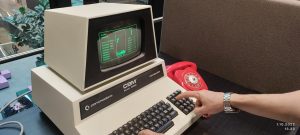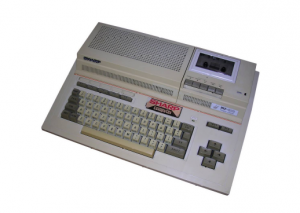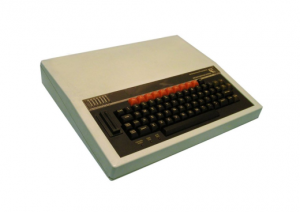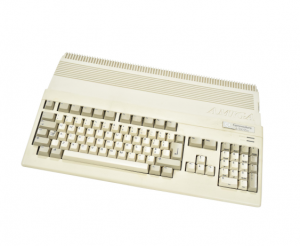The Apple II, one of the most iconic early personal computers, helped define the microcomputing era of the late 1970s and early 1980s. Known for its open architecture, color graphics, and expandability, the Apple II became a staple in homes, schools, and businesses, particularly in North America. Among its extensive library of software and games, the arcade classic Moon Patrol stood out as an early example of fast-paced action gaming on this pioneering machine. Released in 1977, the Apple II was designed by Steve Wozniak and marketed by Apple Computer Inc.. It built upon the success of the Apple I, introducing color graphics and built-in BASIC, making it one of the first truly consumer-friendly personal computers.
Gaming on the Apple II
While Apple promoted the II series as a general-purpose computer, its color graphics and programmability made it a solid gaming platform. Thousands of games were released, including:
-
Lode Runner
-
Choplifter
-
Karateka
- And arcade conversions like Moon Patrol
Apple II’s simple architecture and active community encouraged independent developers, fueling a thriving software market.
Moon Patrol: Bringing the Arcade Home
Moon Patrol, developed by Irem and released by Williams Electronics in arcades in 1982, was a side-scrolling shooter with smooth parallax scrolling, a rarity for the time. Players controlled a lunar buggy, jumping over craters and rocks, while shooting at UFOs and avoiding bombs. In 1983, Moon Patrol was ported to various home computers, including the Apple II.
-
Published by Atarisoft, the game was distributed on 5.25-inch floppy disks.
-
Controlled via keyboard or joystick.
-
Maintained the side-scrolling gameplay of the arcade original.
-
Graphics were simplified due to hardware constraints but retained color sprites and parallax scrolling simulation.
Technical Challenges and Solutions
Bringing Moon Patrol to the Apple II involved significant technical adaptations:
-
Scrolling:
The 1 MHz 6502 processor made smooth side-scrolling difficult. The developers used hardware tricks and optimized graphics drawing routines to simulate smooth motion. -
Graphics:
Apple II’s high-resolution mode offered limited colors (6 simultaneous), so developers had to carefully design sprites to be visible and distinct. -
Sound:
Limited to simple tones via the internal speaker. Sound effects were minimal compared to the arcade machine.
Despite these constraints, Moon Patrol on the Apple II offered fast-paced, recognizable gameplay that captured much of the arcade’s spirit.
Public Reception
Moon Patrol was well received by Apple II users:
-
Praised for bringing the arcade experience home.
-
Recognized as a technically ambitious title on limited hardware.
-
Popular in both North American homes and schools where the Apple II was common.
Atarisoft’s brand recognition also helped the game find a broad audience.
Moon Patrol’s Gameplay on Apple II
Players guided their lunar buggy across rough terrain:
-
Jumping obstacles: Craters, rocks, and land mines.
-
Shooting enemies: UFOs and ground hazards.
-
Avoiding bombs: Dropped from above.
Each section of the game was labeled alphabetically, encouraging players to progress “from A to Z.” While the Apple II version lacked some arcade graphical polish, its addictive gameplay remained intact, making it a favorite among action game fans.
Competition
Moon Patrol on Apple II faced competition from:
-
Atari 8-bit computers, which offered smoother scrolling and better sound.
-
Commodore 64, with hardware sprites and advanced SID sound.
-
IBM PCs, though early models were less gaming-focused.
Nevertheless, in educational and home markets where Apple II dominated, Moon Patrol remained a common and beloved title.































